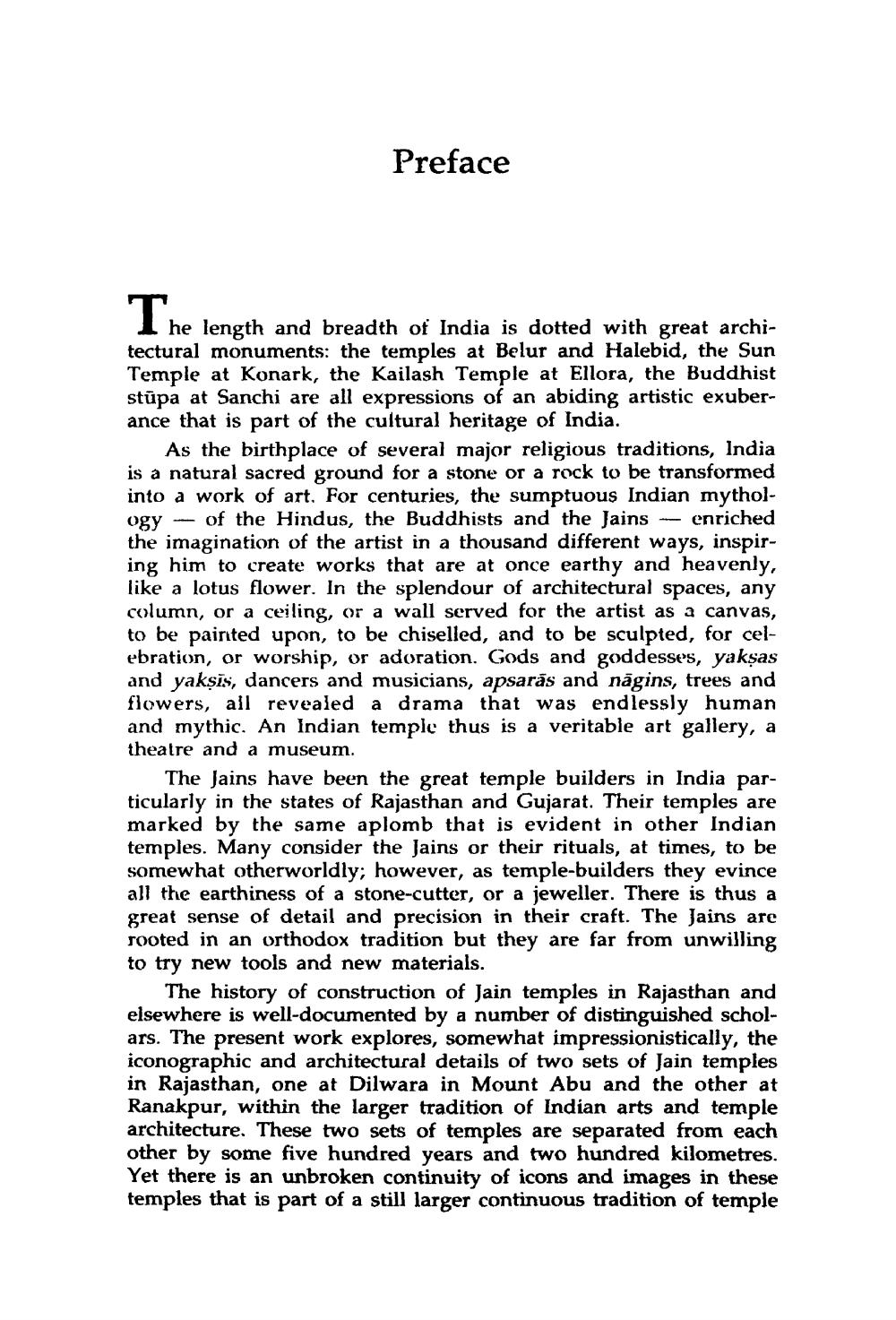________________
Preface
The length and breadth of India is dotted with great archi
tectural monuments: the temples at Belur and Halebid, the Sun Temple at Konark, the Kailash Temple at Ellora, the Buddhist stupa at Sanchi are all expressions of an abiding artistic exuberance that is part of the cultural heritage of India.
As the birthplace of several major religious traditions, India is a natural sacred ground for a stone or a rock to be transformed into a work of art. For centuries, the sumptuous Indian mythology of the Hindus, the Buddhists and the Jains -enriched the imagination of the artist in a thousand different ways, inspiring him to create works that are at once earthy and heavenly, like a lotus flower. In the splendour of architectural spaces, any column, or a ceiling, or a wall served for the artist as a canvas, to be painted upon, to be chiselled, and to be sculpted, for celebration, or worship, or adoration. Gods and goddesses, yakṣas and yakṣis, dancers and musicians, apsaras and nāgins, trees and flowers, all revealed a drama that was endlessly human and mythic. An Indian temple thus is a veritable art gallery, a theatre and a museum.
The Jains have been the great temple builders in India particularly in the states of Rajasthan and Gujarat. Their temples are marked by the same aplomb that is evident in other Indian temples. Many consider the Jains or their rituals, at times, to be somewhat otherworldly; however, as temple-builders they evince all the earthiness of a stone-cutter, or a jeweller. There is thus a great sense of detail and precision in their craft. The Jains are rooted in an orthodox tradition but they are far from unwilling to try new tools and new materials.
The history of construction of Jain temples in Rajasthan and elsewhere is well-documented by a number of distinguished scholars. The present work explores, somewhat impressionistically, the iconographic and architectural details of two sets of Jain temples in Rajasthan, one at Dilwara in Mount Abu and the other at Ranakpur, within the larger tradition of Indian arts and temple architecture. These two sets of temples are separated from each other by some five hundred years and two hundred kilometres. Yet there is an unbroken continuity of icons and images in these temples that is part of a still larger continuous tradition of temple




